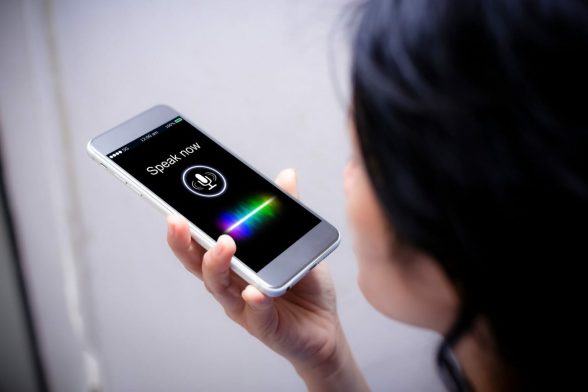- Resources
- CX Trends: 4 Ways to Win Consumer Trust In a No-Touch World
CX Trends: 4 Ways to Win Consumer Trust In a No-Touch World

A summary of four new CX trends highlighted by Capgemini’s Report on Contactless Customer Experience.
Today, leading organizations across the globe are aligning with the contactless world. Touchless interfaces have become integral to the customer experience in this health-and-safety conscious situation. In fact, 77% of consumers expect to increase their use of touchless technologies to avoid physical interactions. Here is the summary of a recent survey by Capgemini that focusses on four key consumer trends in the upcoming days.
The Study
Capgemini surveyed over 4,800 consumers and over 950 executives from 12 major economies: China, the United Kingdom, the United States, Australia, India, Sweden, the Netherlands, Germany, France, Spain, Italy, and Brazil.
We cover these trends in detail below:
Trend 1: Catalyzing Touchless Interface Adoption
Organizations today recognize the need for touchless interactions and expect them to be a trend that continues post-COVID. 73% believe that consumer appetite for non-touch practices including online transactions will continue even when the pandemic is behind us.
The survey reveals that consumers mostly agree. 77% of consumers expect to increase the use of touchless interactions, through voice assistants, facial recognition, or apps, to avoid human interactions and touchscreens. Plus, a whopping 62% said they will continue preferring these touchless interfaces post-COVID. In the United States, this number drops slightly: 55% expect touchless interfaces to continue post-COVID.
However, in India, while 82% agree that touchless interactions are preferable during this pandemic, only 48% would like to continue these touchless interactions post-COVID. All in all, businesses need to adopt a test and learn approach, carefully tracking and incorporating consumer feedback on the new touchless experiences they offer.
Trend 2: Voice-based Interfaces in Physical Places
The “non-touch” capabilities of voice interfaces provide unique opportunities for organizations to engage with consumers in physical locations too, from shops to government offices. The research revealed that 59% of consumers prefer to use voice interfaces in public places – such as shops, banks, or government offices – to avoid touch-based practices during the pandemic.
Stores have been experimenting with voice-based ordering even before the pandemic. For example, McDonald’s announced the introduction of voice-recognition for drive-through orders in September 2019. During the pandemic, this has continued. Starbucks, for example, when it recently reopened some stores in the US, emphasized the availability of voice-based ordering.
Touchless interfaces, especially voice-based interfaces, can also help people who are less skilled or comfortable with using apps and therefore increase “digital inclusion.” For instance, Jio, a major India-based telecom player, found that voice is often the preferred interface for first-time users of mobile data and apps. Strong natural language processing capabilities will be key to winning over those people who are offline or digitally excluded.
Also Read: 2020 CX trends we predicted in a pre-covid world
Trend 3: Adoption of Facial Recognition Technologies
The research reports that 52% prefer facial recognition for authentication at retail stores, banks, airports, and offices during the current scenario. Several contactless payment methods have emerged in the past decade. Facial recognition offers customers a way to experience contactless self-checkout and safeguard against the transmission of pathogens.
However, the survey also suggests that post-pandemic, the popularity of facial recognition technologies will fall drastically. At that time, only 39% would be comfortable with this technology. This suggests that privacy concerns still loom large and will regain precedence once the health emergency subsides.
In fact, a 2019 study found that 59% would avoid a retail store if it used facial recognition to identify them. Companies should offer consumers a choice between adopting facial technology and other traditional forms of authentication, checkout, and payment. This approach can help further dispel concerns about potential data malpractices and give them a sense of control over the experience.
Trend 4: Mobile-based Touchless Transactions
The report states that 66% of consumers prefer to use mobile apps at physical locations such as stores and bank branches instead of touch-based alternatives. In recent years, consumers have grown increasingly comfortable using their mobile phones for a range of activities in an in-store retail environment.
What this means for businesses is that they will need to identify areas in their consumer journey where physical touchpoints can be replaced with safer alternatives involving the customer’s own mobile phone. They will also need to ensure that consumers are made aware of these alternatives and are provided with the necessary support to start using them.
As consumers increasingly turn to use mobile apps, especially payment apps, organizations should ensure that security is an integral part of the app design process. In addition, they should also develop and share guidelines to help customers use mobile apps securely.
Here are the key trends that the report unveils:
- Touchless interfaces have become integral to the customer experience in a health-and-safety conscious world.
- The pandemic is offering a unique opportunity to accelerate the use of voice-based interfaces in physical settings.
- The pandemic has caused an upsurge in the adoption of facial recognition technologies.
- In-store Mobile-based contactless transactions will gain ground.
In a Nutshell
Organizations must reassess their customer experience with an eye on emerging technologies such as vocal interfaces, facial recognition, and mobile-based applications. At the same time, however, they must bear in mind critical concerns over data privacy and security. Fair and transparent policies will be critical to ensure these technologies continue to thrive once the worst of the pandemic is behind us.
Also Read:
How Ozonetel’s Voice Platform can help you create unique contactless customer experiences.
How to transform the contactless delivery experience with better communication







